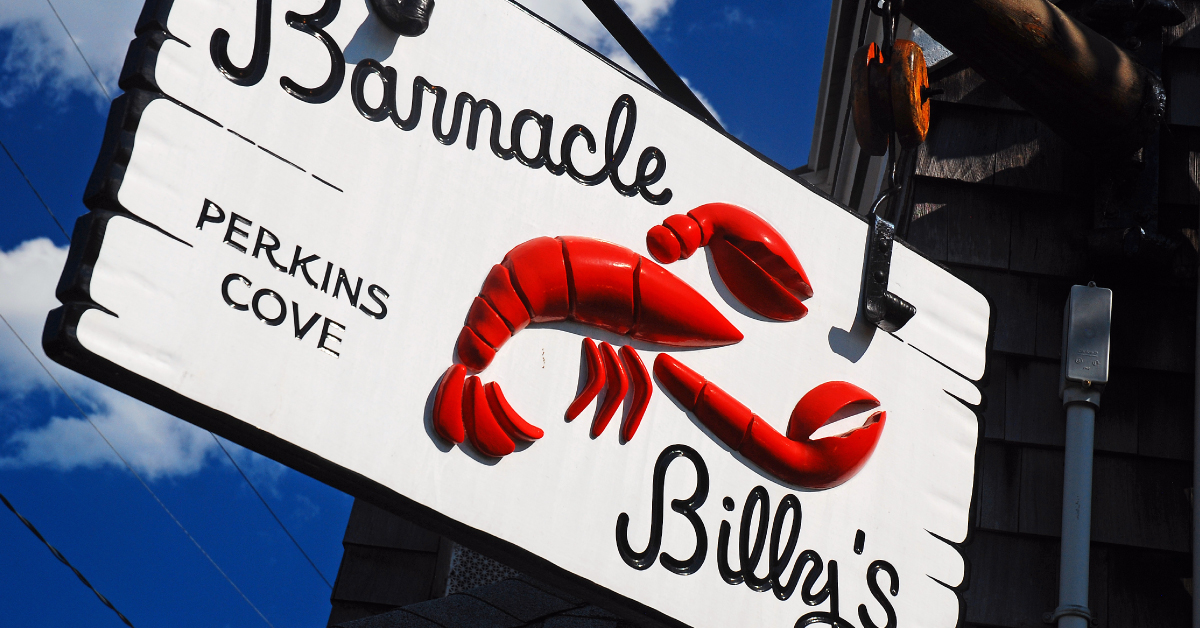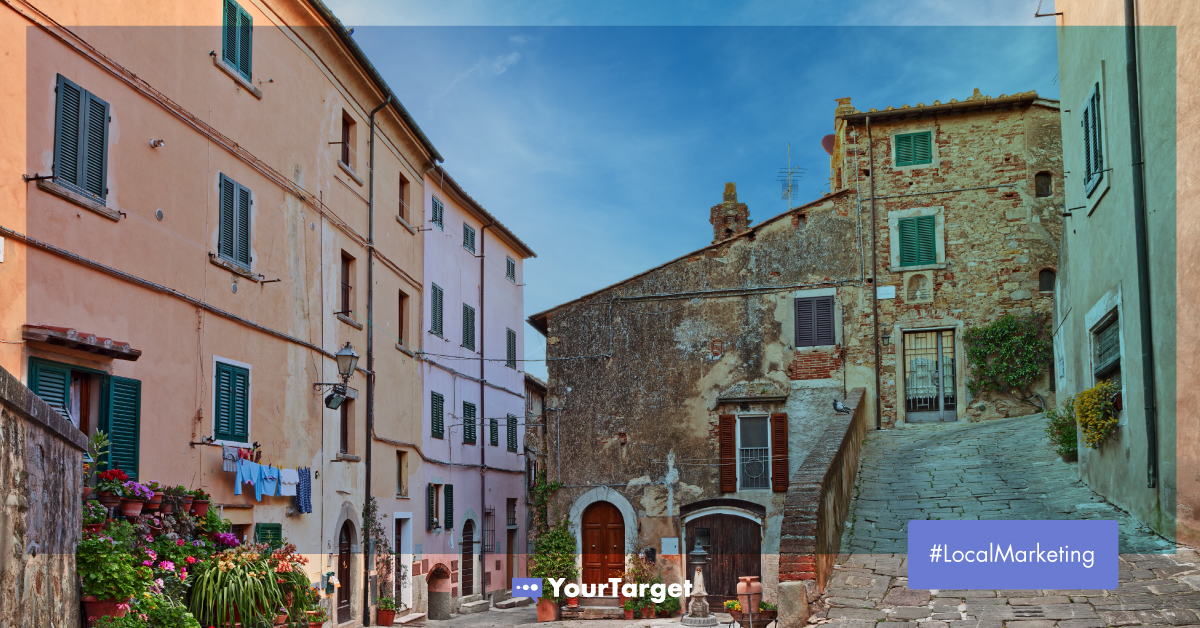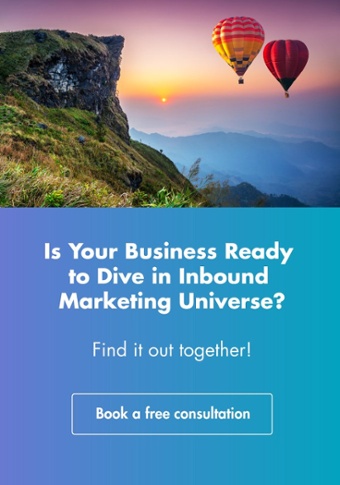If you operate a local business, you likely spend a large amount of your time thinking about the most effective ways to gain new customers and increase brand recognition in your community. Just two decades ago, this would have involved investing in commercials, billboards, cold-calling, and other interruptive outbound marketing tactics. Today, 97% of people learn more about a local company online than any other medium. This means establishing an online presence that allows you to remain connected to customers and businesses in your area is essential.
If your business or organization caters to a local audience, implementing localized inbound marketing is a crucial lead-generation tactic. In today’s article, we’ll examine how you can use inbound marketing to grow your local business.
What’s inbound marketing again?
Inbound marketing is a business methodology that focuses on attracting customers with valuable content and personalized experiences. The goal? To attract, engage, and delight customers. This results in better engagement, improved brand awareness, and, ultimately, increased conversions.
Inbound marketing encompasses these areas:
- Content marketing
- Search engine optimization (SEO)
- Social media marketing
- Branding
What is local marketing?
With local marketing, businesses target customers within a certain radius of their location. By narrowing the focus of their inbound marketing efforts, businesses can gear their strategies towards potential nearby customers thus improving visibility and conversion rates.
Why choose inbound marketing for local businesses?
Traditional direct marketing methods don’t work like they used to. Shifts in consumer expectations and digital trends have changed the way customers find information, interact with brands, and purchase products and services.
To remain competitive as a local business in today’s fast-paced digital age, small and medium-sized businesses must implement inbound strategies to meet and surpass audience expectations.
So what exactly are the benefits of inbound marketing for local businesses?
1. It’s cost-effective
Did you know that inbound marketing generates 3x more leads per dollar than traditional methods? This means inbound marketing is a particularly cost-effective solution for local businesses that might not have a large budget allocated to their initial marketing spend.
Moreover, inbound marketing content is generally evergreen, meaning it doesn’t have a shelf-life. Blogs, social media posts, podcasts, white papers, and other forms of content will remain relevant long after they’re published. This means that the initial investment you spend on inbound marketing will continue to generate traffic and attract leads over time.
2. Improves customer retention
Unlike traditional marketing techniques, inbound marketing doesn’t require you to force your products or services on unsuspecting customers via annoying cold calls or interruptive ads. Instead, inbound strategies focus on providing relevant and valuable content that nurtures customers. This creates positive customer experiences and makes customers more likely to remain loyal and purchase from your business again and again.
3. Boosts brand authority
By empowering customers to find your business organically, you come across as more trustworthy and authoritative. Moreover, 85% of consumers conduct research online before making a purchase decision. With this in mind, sharing informative content that ranks on search engines will locate your brand as an expert in its industry.
4. Attracts quality traffic and leads
Inbound marketing focuses on drawing in the right kind of leads and traffic with relevant and targeted information. Using the inbound methodology, local businesses can focus on attracting leads that are more likely to qualify and ultimately convert to customers.

How to develop an inbound marketing strategy for your local business
Developing an inbound marketing strategy for local businesses might seem like a daunting task. If you’re not sure where to start, here are six best practices to follow to get started.
- Outline your marketing goals
- Content creation and distribution
- Focus on local SEO to boost organic traffic
- Engage with your audience on social media
- Write clear, personalized CTAs
- Use data and analytics to measure results
Before you dive right into inbound marketing, you’ll need to set some goals for yourself.
Your local marketing SMART goals should outline what you want to accomplish over a given period. These goals need to be measurable and informed by key performance indicators (KPIs) and metrics.
Measurable goals can be related to lead generation, lead conversions, or brand awareness. Once you’ve outlined your goals, you can organize and optimize your marketing efforts to focus on achieving these outcomes.
Creating and distributing valuable and relevant content is one of the most effective inbound marketing tactics. 70% of businesses are investing in content marketing because of its ability to increase website traffic and increase sales.
Content can be in the form of
- Blog posts (86% of companies produce blog content compared to other formats.)
- Videos, which 80% of marketers claim has directly increased sales
- Infographics
- Case studies
- White papers
- Podcasts
A highly optimized website lies at the center of your inbound marketing strategy.
Creating the right content for the right people will enable you to position your business as a local authority that customers can trust. What’s more, your website can further establish trust by providing your local audience with customer support, testimonials, and consumer reviews that can help to pave the way for further conversions.
So, what type of content do small local businesses need to create? The goal should be to share high-quality educational or entertaining content that appeals to your audience’s needs. You can create content for audience segments to ensure you’re providing content for each stage of the funnel.
Ultimately, the goal should be for website visitors to share your content with other people in the local community to boost brand awareness and generate leads.

Did you know that 46% of all Google searches are looking for local information? This means that local SEO is crucial for local businesses to achieve better search engine rankings and greater visibility. Consider these other key statistics that illustrate the case for SEO:
- 72% of consumers that did a local search visited a store within five miles.
- 88% of customers are more likely to call or visit a store within 24-hours of searching from a mobile device.
- 18% of local smartphone searches led to a purchase within a day.
- 61% of mobile searchers are more likely to get in touch with a local business if their website is mobile-friendly.
What conclusions can we glean from these statistics?
- SEO content must be a priority for local businesses to increase traffic and conversions.
- Mobile-optimization is crucial for increasing organic traffic and reducing customer frustrations that arise from websites that aren’t optimized for mobile.
Another important fact to consider is that 92% of searchers will choose businesses that are featured on the first local search results page. For this reason, businesses should ensure they’re using Google My Business and work on their website’s backlink profile to improve the likelihood of being featured on SERPs.
We wrote an in-depth guide about how to create an SEO strategy for 2021 to help you get started.
Billions of people around the world are active in some form of social media. We’ll warrant a guess that some of your local audience is part of those billions!
If you’re operating a business in today’s digital age, you’re likely using at least one form of social media already. As a local business, it’s important to use social media to connect with your target audience. You can use social media to:
- Tag locations and geographic areas in social media posts to rank better on local search results pages.
- Interact with customers on social pages to keep the conversation going and provide omnichannel support.
- Share valuable content with your audience and use customer feedback to inform your content strategy with trending topics.
- Invest in paid advertising if your budget allows for it, but be sure to target the local areas that your business operates in or ships to.
Although increasing traffic is an excellent goal for a local business, increasing conversions is the ultimate objective. According to Hubspot, businesses that use clear and personalized call-to-actions (CTAs) can increase the chances of conversions by 202%!
Make actionable CTAs that are clear and catchy an essential part of your inbound marketing strategy. Make sure your customers know exactly what steps they need to take next and ensure those steps lead to highly optimized landing pages (check out this article for tips on optimizing your landing pages!). Some common CTAs for local businesses include:
- Invitation to subscribe to a newsletter
- Download a free resource
- View a webinar
- Incentives for first-time customers
- Access a product demo
Every part of your local inbound marketing strategy should be tracked and measured.
There are numerous tools on the market that allow you to effectively track, measure, and optimize your strategy. Armed with data and analytics insights, you can make data-driven decisions that can inform your local marketing strategies as your business grows.
In today’s hyper-competitive world you’re not going to get anywhere by blindly lobbing promotional messages at customers in the hopes of securing a lead. Instead, local businesses must take a more nuanced approach using inbound marketing tactics geared towards local audiences. If you do this, rest assured that you’ll build longer-lasting customer relationships, improve conversions, and boost your business.
Want to know more about creating a local inbound marketing strategy for your business?
Get in touch and ask us for a free consultation today!

